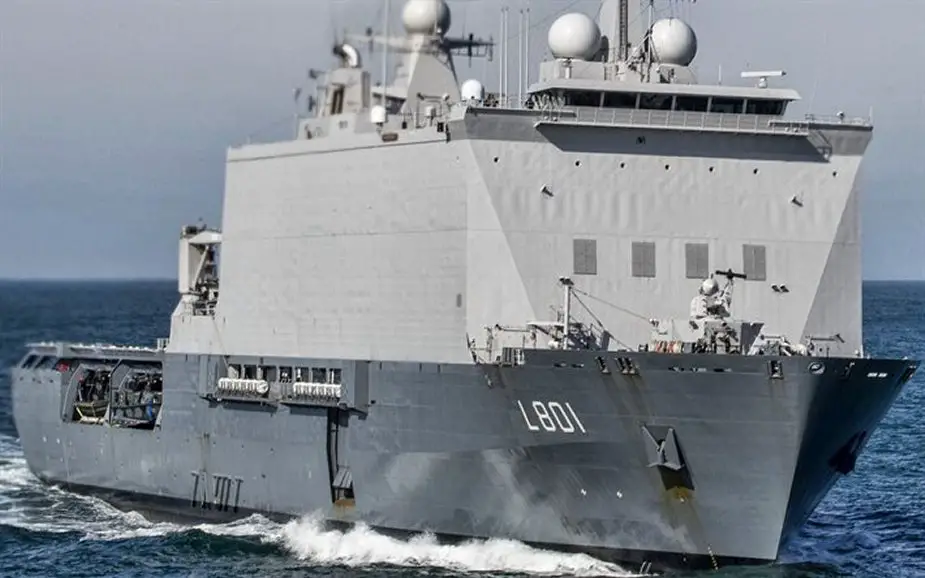Breaking news
New ballast water treatment system by BIO-UV Group for US Navy.
According to a press release published by BIO-UV Group on June 30, 2021, UV-based ballast water treatment specialist and its American engineering and servicing partner, The Columbia Group, have been selected to develop a ballast water treatment system for the United States Navy.
Follow Navy Recognition on Google News at this link
 Landing Platform Dock HNLMS Johan de Witt (Picture source: Besthqwallpapers)
Landing Platform Dock HNLMS Johan de Witt (Picture source: Besthqwallpapers)
The contract follows an international call for tenders to develop a military version of a UV ballast water disinfection system to equip future US Navy ships.
Until now, military vessels have operated outside the scope of the _USCG Standards for Living Organisms in Ship's Ballast Water Discharged in US Waters_ regulation. The ruling entered into force in 2016 and governs the management of ballast water in American waters. However, future American military vessels will now need to be equipped with ballast water treatment systems.
Working with The Columbia Group, BIO-UV Group will design a robust ballast water treatment system for ballast pump capacities from 300m3/h up to 1,000m3/h.
Winning the tender, BIO-UV Group demonstrated its experience acquired with the French and other navies. The company recently secured contracts to supply the Belgian and Dutch navies with ballast water treatment solutions for installation to twelve mine-hunting vessels.
BIO-UV Group is part of a very small global group of companies that have developed a UV-based water disinfection system certified to both IMO (International Maritime Organization) and USCG (United States Coast Guard) type approval requirements.
This dual certification provides BIO-UV Group with a major advantage over its competitors by enabling it to guarantee shipowners that their vessels will be able to sail anywhere in the world and in particular in the United States coastal waters.
HNLMS Johan de Witt is the second Landing Platform Dock (LPD) amphibious warfare ship of the Royal Netherlands Navy. It is an improved design of Rotterdam, which was designed in conjunction between the Netherlands and Spain. The ship, displacing 16,800 tons, was launched on 13 May 2006.
The ship is equipped with a large helicopter deck for helicopter operations and a dock for large landing craft. It can carry six NH 90 helicopters or four Chinook helicopters. It has a well dock for two landing craft utility and it carries four davit-launched LCVPs. The dock is wide enough to support two LCAC, but to allow for this, the centre barrier, that splits the dockwell in two, must be removed.
The vessel has an extra deck with rooms for command staff to support a battalion-size operation. The ship has a complete Role II hospital, including an operating theatre and intensive care facilities. A surgical team can be stationed onboard. The ship also has a desalination system enabling it to convert seawater into drinking water.
It is equipped with pod propulsion enabling the ship to use dynamic positioning while sea basing.


























